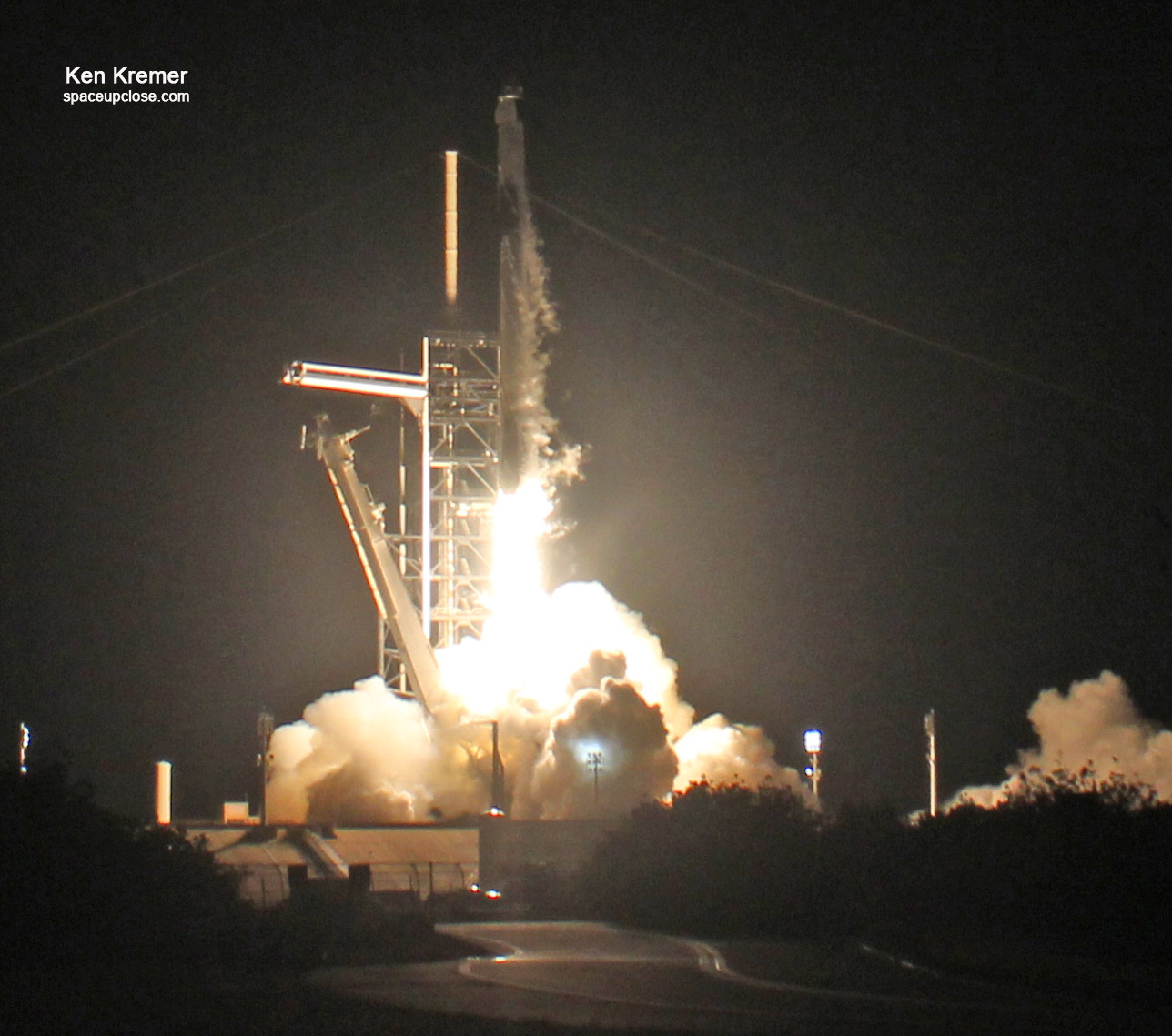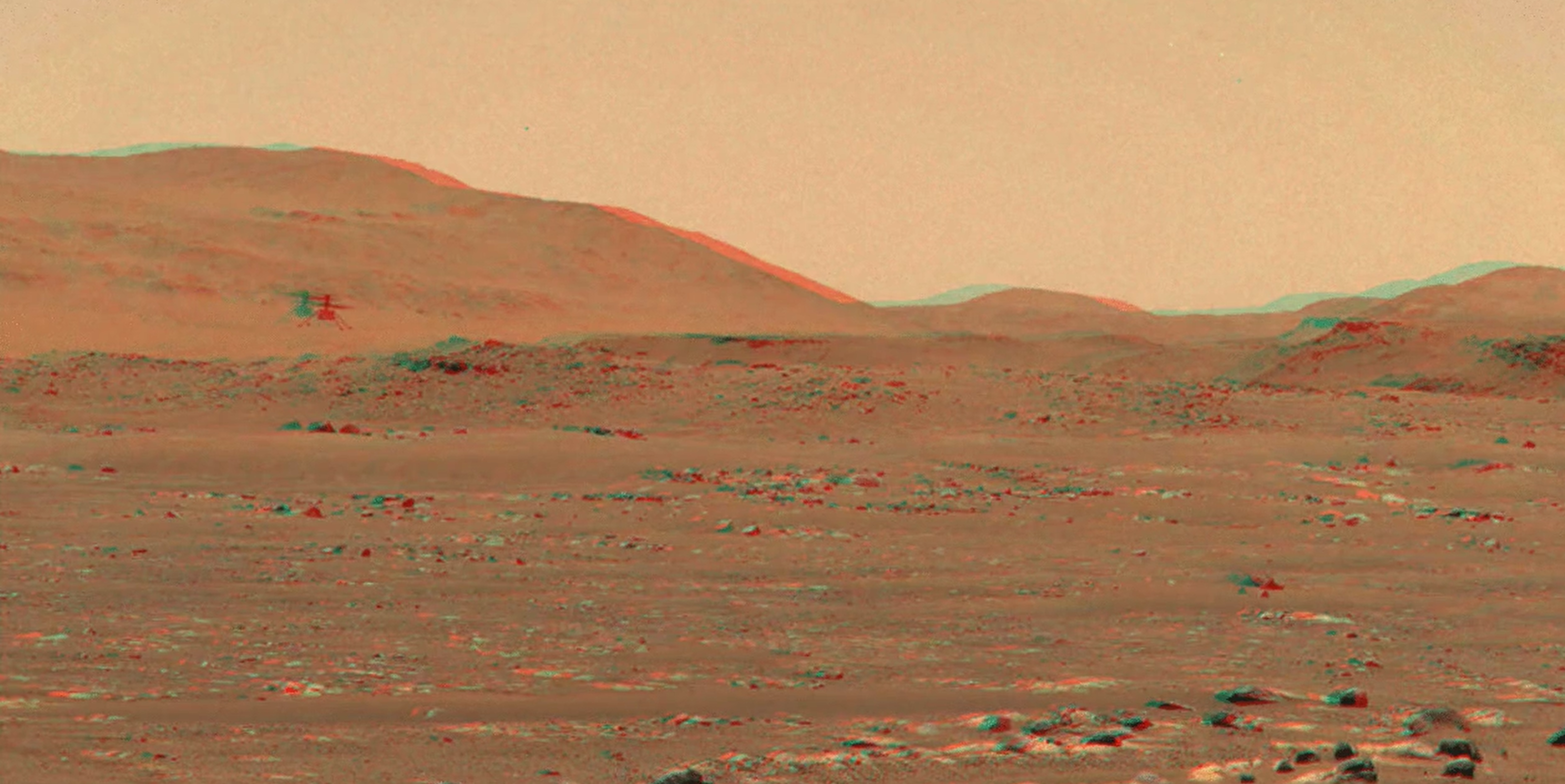
For SpaceUpClose.com & RocketSTEM
CAPE CANAVERAL, FL – A stunning new video released by the team controlling NASA’s history making Ingenuity Helicopter gives viewers the sensation of standing on the Red Planet and seeing the amazing chopper fly over Mars in 3D firsthand – see still image above and the spectacular full video below.
But to get the full effect of the 3D anaglyph imagery you will need to whip out your color-filtered red-cyan 3D glasses.
Check out our sequence of 3D screenshot still images taken from the video – shown above and below – for a long, detailed and thoroughly enjoyable look.
The 3D action video was compiled from images taken when Ingenuity took to the Martian skies on its third successful test flight on April 25 – by the agency’s nearby Perseverance rover commanded to capture the historic moment.
Perseverance recorded the magical moment using the high resolution zoomable dual-camera Mastcam-Z color imager mounted on the rover’s mast or head.
“Now NASA engineers have rendered the flight in 3D, lending dramatic depth to the flight as the helicopter ascends, hovers, then zooms laterally off-screen before returning for a pinpoint landing. Seeing the sequence is a bit like standing on the Martian surface next to Perseverance and watching the flight firsthand,” the NASA JPL team reports.
Watch the spectacular 3D video here:
Video Caption: After the zoomable dual-camera Mastcam-Z imager aboard NASA’s Perseverance rover captured the third flight of the agency’s Ingenuity Mars helicopter on April 25, 2021, Justin Maki, an imaging scientist at NASA’s Jet Propulsion Laboratory in Southern California, led the team that stitched the images into a video. The frames of the video were then reprojected to optimize viewing in an anaglyph, or an image seen in 3D when viewed with color-filtered glasses. Credits: NASA/JPL-Caltech/ASU/MSSS
To date Ingenuity has completed 5 history making test flights on Mars proving that flying is possible on the Red Planet despite the extremely thin atmosphere.

Since the 3rd chopper test flight took place on April 25, NASA engineers have now had the time to render the flight in 3D, “lending dramatic depth to the flight as the helicopter ascends, hovers, then zooms laterally off-screen before returning for a pinpoint landing. Seeing the sequence is a bit like standing on the Martian surface next to Perseverance and watching the flight firsthand.”
You’re in for a treat. I captured #MarsHelicopter’s 3rd flight in #3D. Got red/blue glasses? Watch it rise and zoom off before returning to nail its landing.
Story: https://t.co/4rhuKHqqBN
Make 3D glasses: https://t.co/2cvBzpsBBa
More Mars in 3D: https://t.co/JtmlHcTuZ7 pic.twitter.com/RbkfmdM6Aa— NASA's Perseverance Mars Rover (@NASAPersevere) May 12, 2021
Along with producing images that enable the public to follow the rover’s daily discoveries, the cameras provide key data to help engineers navigate and scientists choose interesting rocks to study.
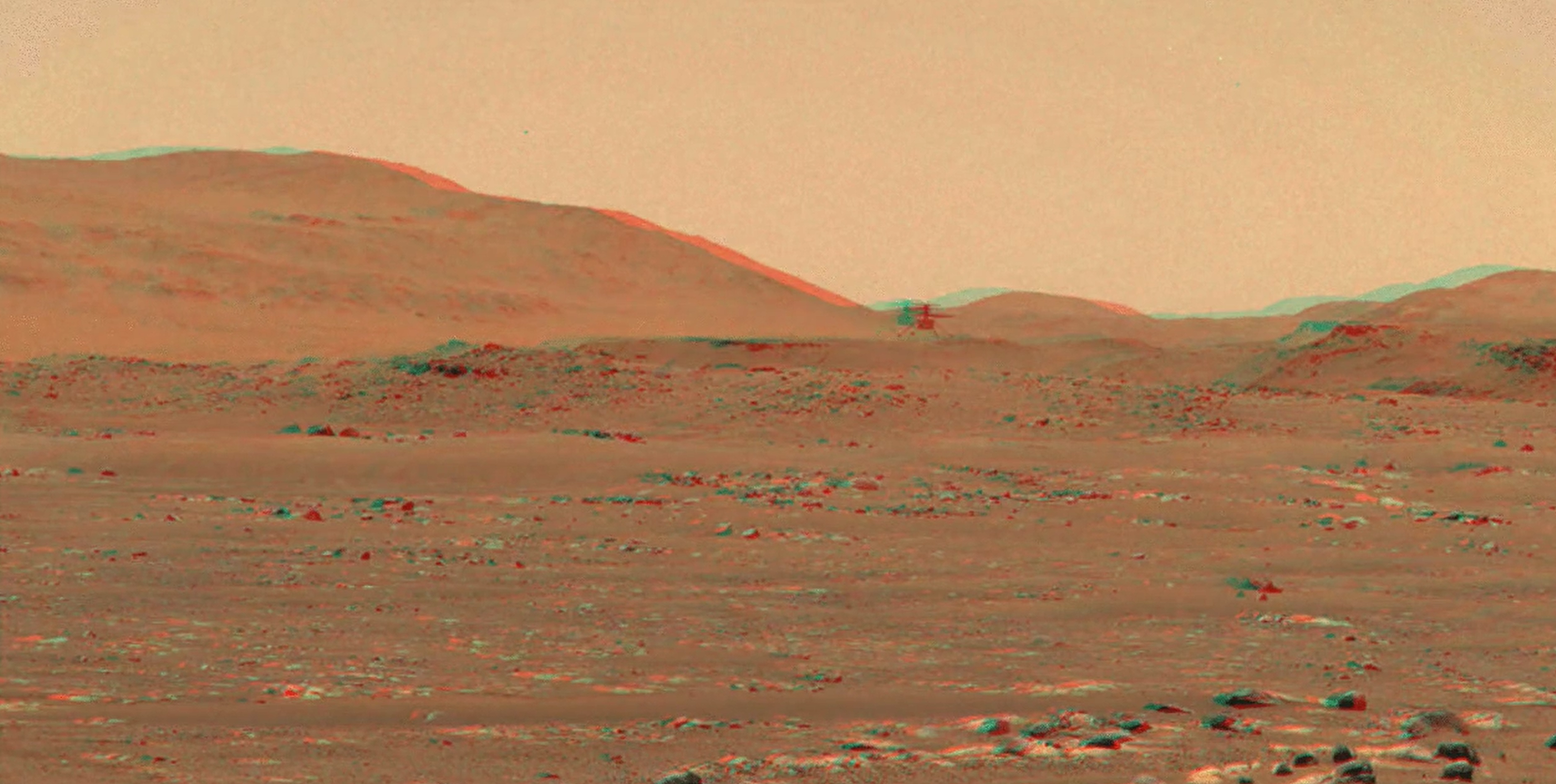
Further details from NASA:
Justin Maki, an imaging scientist at NASA’s Jet Propulsion Laboratory in Southern California, led the team that stitched the images into a video. The frames of the video were reprojected to optimize viewing in an anaglyph, or an image seen in 3D when viewed with color-filtered glasses (you can create your own 3D glasses in a few minutes).
Maki’s been creating 3D imaging of Mars since his days as a graduate student processing images from NASA’s Sojourner, the first Mars rover in 1997. But this is the first time he’s created actual 3D video of an aircraft flying on Mars. “The Mastcam-Z video capability was inherited from the Mars Science Laboratory MARDI (MArs Descent Imager) camera,” Maki said. “To be reusing this capability on a new mission by acquiring 3D video of a helicopter flying above the surface of Mars is just spectacular.” The videos of the helicopter are the most extensive 3D video yet from the Mastcam-Z team.
The rover’s drivers and robotic-arm operators use a more sophisticated 3D system to understand exactly how things are positioned on Mars before planning the rover’s movements. But, according to Maki, team members have also been viewing still 3D images for rover-drive planning. “A helicopter flying on Mars opens a new era for Mars exploration. It’s a great demonstration of a new technology for exploration,” he added. “With each flight we open up more possibilities.”
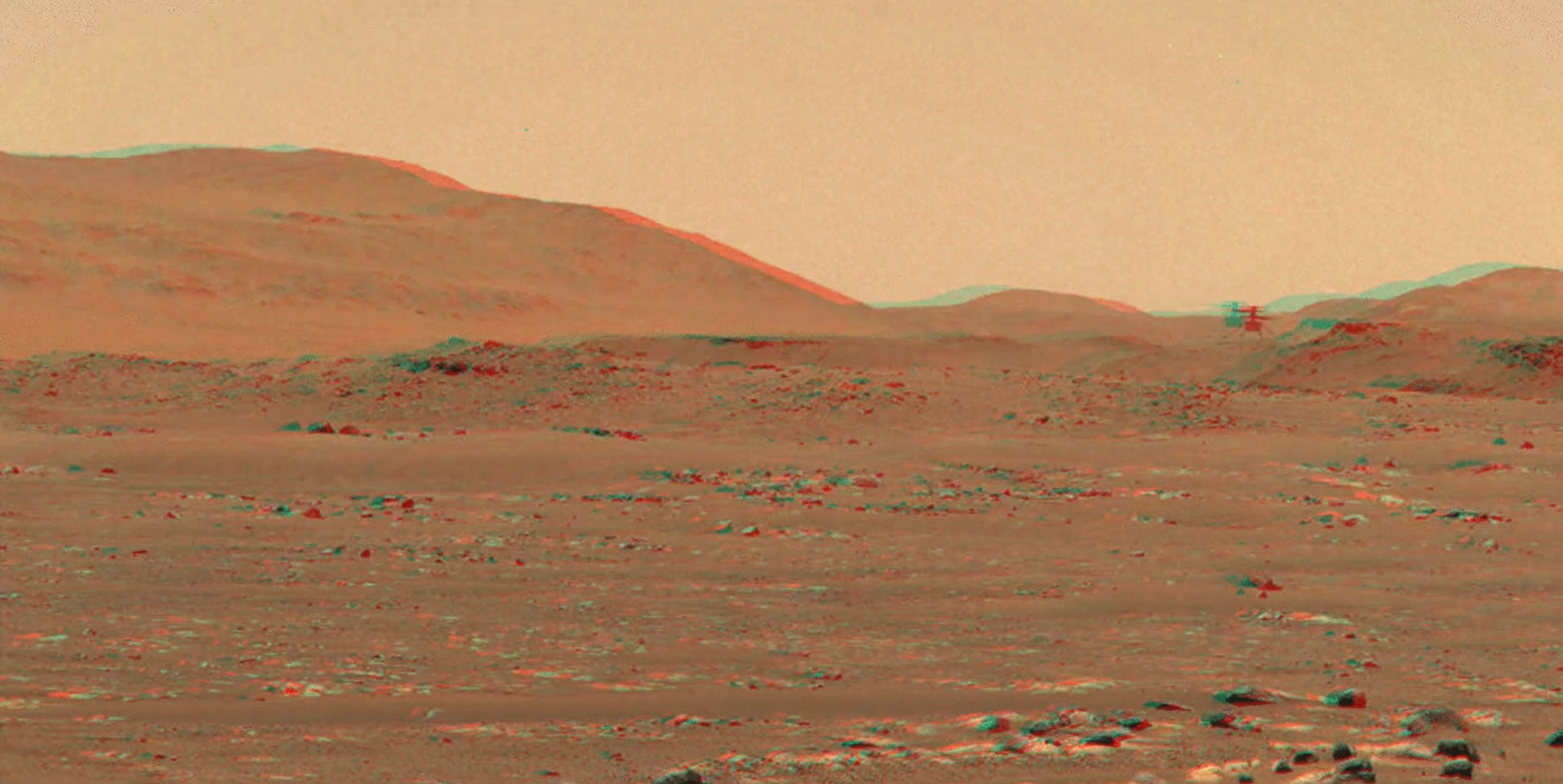
Here is the 2D version of the Mastcam-Z video
Video Caption: NASA’s Ingenuity Mars Helicopter takes off and lands in this video captured on April 25, 2021, by Mastcam-Z, an imager aboard NASA’s Perseverance Mars rover. As expected, the helicopter flew out of its field of vision while completing a flight plan that took it 164 feet (50 meters) downrange of the landing spot. Keep watching, the helicopter will return to stick the landing. Credits: NASA/JPL-Caltech
For the 3rd test flight on April 25 Ingenuity flew further and faster than ever before
The helicopter took off at 4:31 a.m. EDT (1:31 a.m. PDT), or 12:33 p.m. local Mars time, rising 16 feet (5 meters) on Sunday – the same altitude as its second flight.
And it also flew faster – speeding up from 0.5 meters per second in flight #2 to 2 meters per second in flight #3.
“Then it zipped downrange 164 feet (50 meters), just over half the length of a football field, reaching a top speed of 6.6 feet per second (2 meters per second).”
Overall it flew for 80 seconds
The challenges of flying are incredible because the fully autonomous flight is carried out in the extremely thin Martian atmosphere with few air molecules amounting to less than 1% as dense as Earth’s– approximately equivalent to 3 times the height of Mount Everest – and under frigid Antarctica-like conditions of minus 90 C (Minus 130 F).
Perseverance touched down at Octavia E. Butler Landing with Ingenuity attached to its belly on Feb. 18, 2021. The helicopter was deployed to the surface of Jezero Crater on April 3.
Since then Ingenuity has far surpassed all prelaunch objectives and far outstripped checkouts during testing on Earth while making history as humanity’s first aircraft to fly beyond Earth during the 1st test flight on April 19.
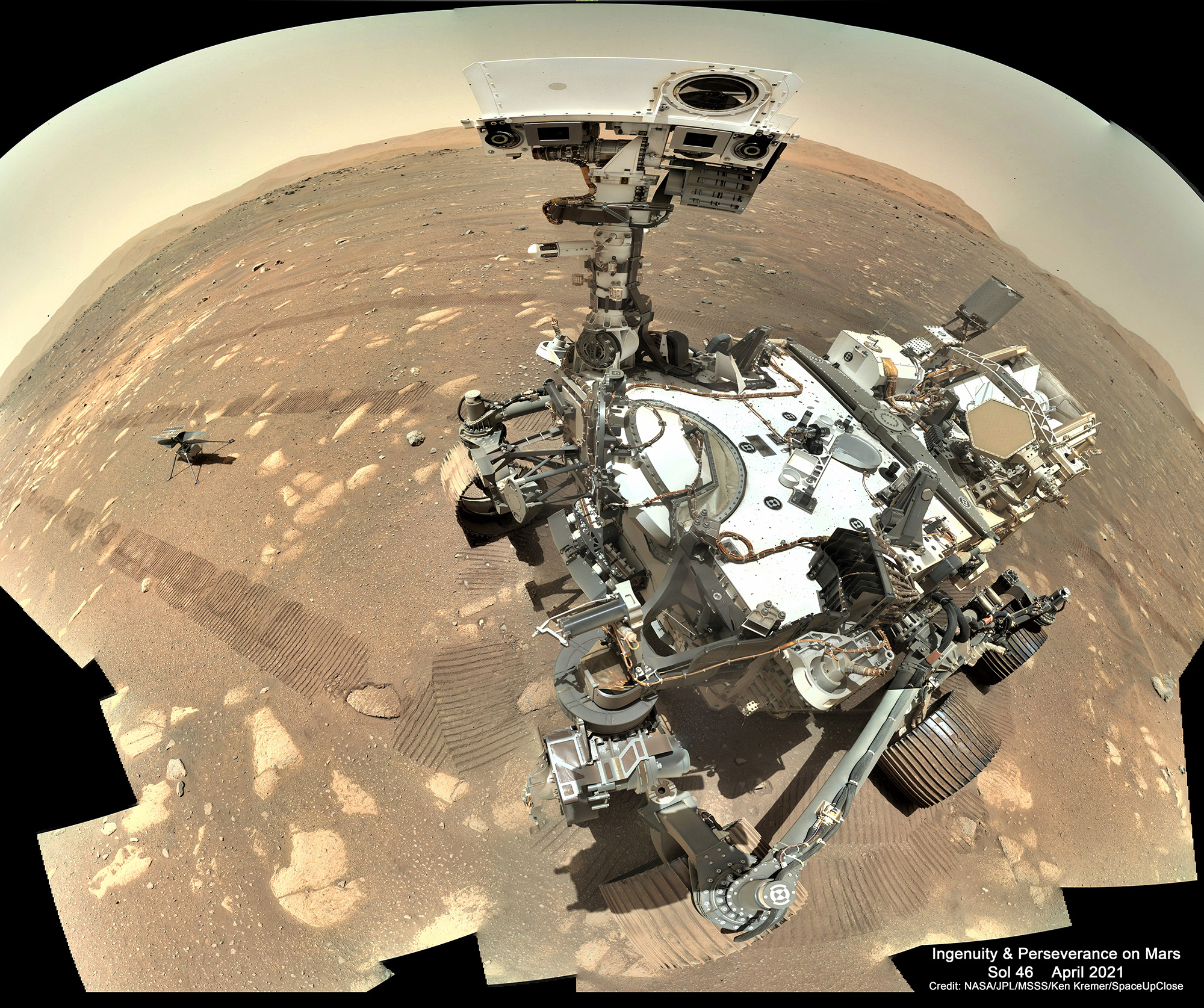
The solar powered Ingenuity helicopter is a technology demonstration experiment aimed at attempting and demonstrating the first flight on Mars.
The four legged Ingenuity has a mass of about 4.0 pounds (1.8 kilograms) and stands 1.6 feet or 19 inches (0.49 meters) high.
Watch the May 7 edition of The Donlan Report on News Nation featuring my live interview analysis of the falling Chinese Long March 5B rocket and updates on Ingenuity results and SLS core stage arrival at KSC
https://twitter.com/TheDonlonReport/status/1391060449282637825
Watch the May 10 edition of Stay Curious’ for my live interview about Ingenuity and Perseverance, as well as OSIRIS-Rex, Artemis, SLS SpaceX launches and much more:
https://www.facebook.com/175507880819/videos/753000855387214
Watch Ken’s continuing reports about Mars 2020 Perseverance and Curiosity rovers, Artemis and NASA missions, SpaceX, Starlink, Commercial Crew and Starliner and Crew Dragon and onsite for live reporting of upcoming and recent SpaceX and ULA launches including Crew 1 & 2, Demo-2, ISS, X-37B, Solar Orbiter, NRO spysats and national security missions and more at the Kennedy Space Center and Cape Canaveral Space Force Station.
Stay tuned here for Ken’s continuing Earth and Planetary science and human spaceflight news: www.kenkremer.com –www.spaceupclose.com – twitter @ken_kremer – email: ken at kenkremer.com
Dr. Kremer is a research scientist and journalist based in the KSC area, active in outreach and interviewed regularly on TV and radio about space topics.
………….
Ken’s photos are for sale and he is available for lectures and outreach events
Ken has created hundreds of widely published Mars rover mosaics and lectures also about NASA’s Mars rovers
Please consider supporting Ken’s work by purchasing his photos and/or donating at Patreon:
https://www.patreon.com/kenkremer
x


